Diphenhydramine Hydrochloride

Diphenhydramine Hydrochloride structure
|
Common Name | Diphenhydramine Hydrochloride | ||
|---|---|---|---|---|
| CAS Number | 147-24-0 | Molecular Weight | 291.816 | |
| Density | 1.024g/cm3 | Boiling Point | 343.7ºC at 760 mmHg | |
| Molecular Formula | C17H22ClNO | Melting Point | 168-172 °C | |
| MSDS | Chinese USA | Flash Point | 101.5ºC | |
| Symbol |

GHS07 |
Signal Word | Warning | |
Use of Diphenhydramine HydrochlorideDiphenhydramine HCl (Benadryl), a histamine H1 antagonist used as an antiemetic, antitussive, for dermatoses and pruritus, for hypersensitivity reactions, as a hypnotic, an antiparkinson, and as an ingredient in common cold preparations.Target: Histamine H1 receptorDiphenhydramine HCl (Benadryl), a histamine H1 antagonist used as an antiemetic, antitussive, for dermatoses and pruritus, for hypersensitivity reactions, as a hypnotic, an antiparkinson, and as an ingredient in common cold preparations. It has some undesired antimuscarinic and sedative effects. Diphenhydramine competes with free histamine for binding at HA-receptor sites. This antagonizes the effects of histamine on HA-receptors, leading to a reduction of the negative symptoms brought on by histamine HA-receptor binding. |
| Name | diphenhydramine hydrochloride |
|---|---|
| Synonym | More Synonyms |
| Description | Diphenhydramine HCl (Benadryl), a histamine H1 antagonist used as an antiemetic, antitussive, for dermatoses and pruritus, for hypersensitivity reactions, as a hypnotic, an antiparkinson, and as an ingredient in common cold preparations.Target: Histamine H1 receptorDiphenhydramine HCl (Benadryl), a histamine H1 antagonist used as an antiemetic, antitussive, for dermatoses and pruritus, for hypersensitivity reactions, as a hypnotic, an antiparkinson, and as an ingredient in common cold preparations. It has some undesired antimuscarinic and sedative effects. Diphenhydramine competes with free histamine for binding at HA-receptor sites. This antagonizes the effects of histamine on HA-receptors, leading to a reduction of the negative symptoms brought on by histamine HA-receptor binding. |
|---|---|
| Related Catalog | |
| References |
| Density | 1.024g/cm3 |
|---|---|
| Boiling Point | 343.7ºC at 760 mmHg |
| Melting Point | 168-172 °C |
| Molecular Formula | C17H22ClNO |
| Molecular Weight | 291.816 |
| Flash Point | 101.5ºC |
| Exact Mass | 291.138977 |
| PSA | 12.47000 |
| LogP | 4.15620 |
| Stability | Stable, but slowly darkens upon exposure to light. Incompatible with strong oxidizing agents. |
| Water Solubility | 1000 g/L |
CHEMICAL IDENTIFICATION
HEALTH HAZARD DATAACUTE TOXICITY DATA
MUTATION DATA
|
| Symbol |

GHS07 |
|---|---|
| Signal Word | Warning |
| Hazard Statements | H302 |
| Precautionary Statements | P210-P260-P280-P301 + P310-P311 |
| Personal Protective Equipment | dust mask type N95 (US);Eyeshields;Faceshields;Gloves |
| Hazard Codes | Xn:Harmful |
| Risk Phrases | R22 |
| Safety Phrases | S36 |
| RIDADR | 2811 |
| WGK Germany | 3 |
| RTECS | KR7000000 |
| HS Code | 2933990090 |
|
~% 
Diphenhydramine... CAS#:147-24-0 |
| Literature: Chemical Science, , vol. 4, # 7 p. 2822 - 2827 |
|
~% 
Diphenhydramine... CAS#:147-24-0 |
| Literature: Recueil des Travaux Chimiques des Pays-Bas, , vol. 71, p. 431 |
|
~% 
Diphenhydramine... CAS#:147-24-0 |
| Literature: Recueil des Travaux Chimiques des Pays-Bas, , vol. 71, p. 431 |
| HS Code | 2922199090 |
|---|---|
| Summary | 2922199090. other amino-alcohols, other than those containing more than one kind of oxygen function, their ethers and esters; salts thereof. VAT:17.0%. Tax rebate rate:13.0%. . MFN tariff:6.5%. General tariff:30.0% |
|
Developing structure-activity relationships for the prediction of hepatotoxicity.
Chem. Res. Toxicol. 23 , 1215-22, (2010) Drug-induced liver injury is a major issue of concern and has led to the withdrawal of a significant number of marketed drugs. An understanding of structure-activity relationships (SARs) of chemicals ... |
|
|
A predictive ligand-based Bayesian model for human drug-induced liver injury.
Drug Metab. Dispos. 38 , 2302-8, (2010) Drug-induced liver injury (DILI) is one of the most important reasons for drug development failure at both preapproval and postapproval stages. There has been increased interest in developing predicti... |
|
|
Chemical genetics reveals a complex functional ground state of neural stem cells.
Nat. Chem. Biol. 3(5) , 268-273, (2007) The identification of self-renewing and multipotent neural stem cells (NSCs) in the mammalian brain holds promise for the treatment of neurological diseases and has yielded new insight into brain canc... |
| 2-Diphenylmethoxy-N,N-dimethylethylamine Hydrochloride |
| 2-benzhydryloxy-N,N-dimethylethanamine,hydrochloride |
| 2-(Benzhydryloxy)-N,N-dimethylethylamine, hydrochloride |
| Benzhydramine HCl |
| Diphenhydramine hydrochloride |
| 2-(Benzhydryloxy)-N,N-dimethylethylamine Hydrochloride |
| Allergina |
| benzhydramine hydrochloride |
| Ethanamine, 2- (diphenylmethoxy)-N,N-dimethyl-, hydrochloride |
| 2-(Diphenylmethoxy)-N,N-dimethylethanamine hydrochloride |
| EINECS 205-687-2 |
| Ethanamine, 2-(diphenylmethoxy)-N,N-dimethyl-, hydrochloride (1:1) |
| Ethylamine, 2- (diphenylmethoxy)-N,N-dimethyl-, hydrochloride |
| N,N-Dimethyl-2-(diphenylmethoxy)-ethylamine hydrochloride |
| Ethylamine, N,N-dimethyl-2-(diphenylmethoxy)-, hydrochloride |
| 2-(diphénylméthoxy)-N,N-diméthyléthanamine chlorhydrate |
| Benadryl |
| Sedopretten |
| 2-Diphenylmethoxy-N,N-dimethylet |
| 2-(Diphenylmethoxy)-N,N-dimethylethanaminhydrochlorid |
| MFCD00012479 |
| a-(2-Dimethylaminoethoxy)diphenylmethane Hydrochloride |
| b-Dimethylaminoethyl Benzhydryl Ether Hydrochloride |
| 2-(Diphenylmethoxy)-N,N-dimethylethanamine hydrochloride (1:1) |
| β-Dimethylaminoethyl benzhydryl ether hydrochloride |
| N-(2-Diphenylmethoxyethyl)-N,N-Dimethylamine Hydrochloride |
| 2-Diphenylmethoxy-N,N-dimethylethanamine hydrochloride |
| 2-(Benzhydryloxy)-N,N-dimethylethanamine hydrochloride |
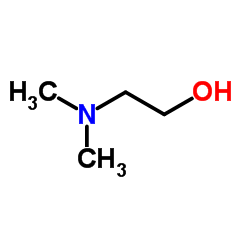
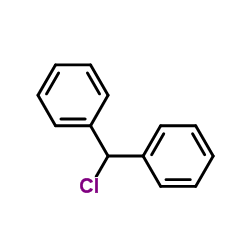
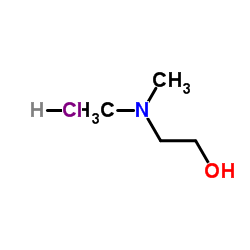
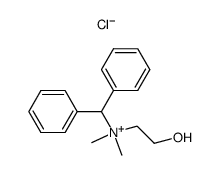
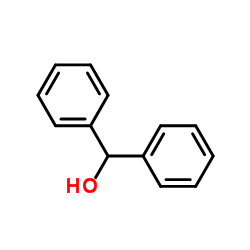 CAS#:91-01-0
CAS#:91-01-0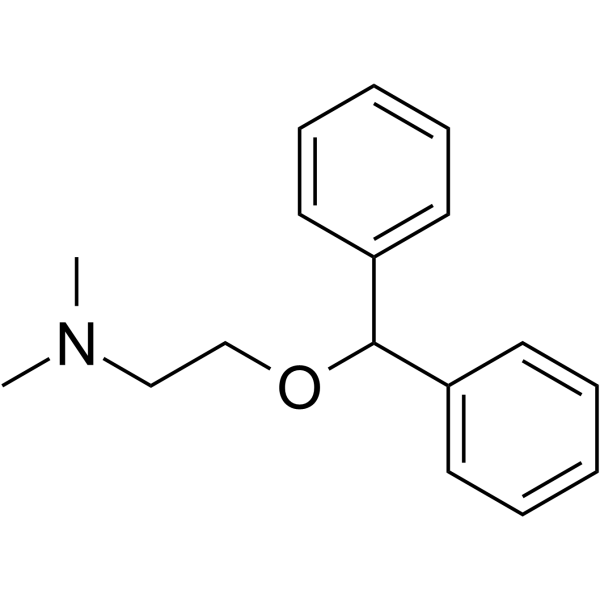 CAS#:58-73-1
CAS#:58-73-1
